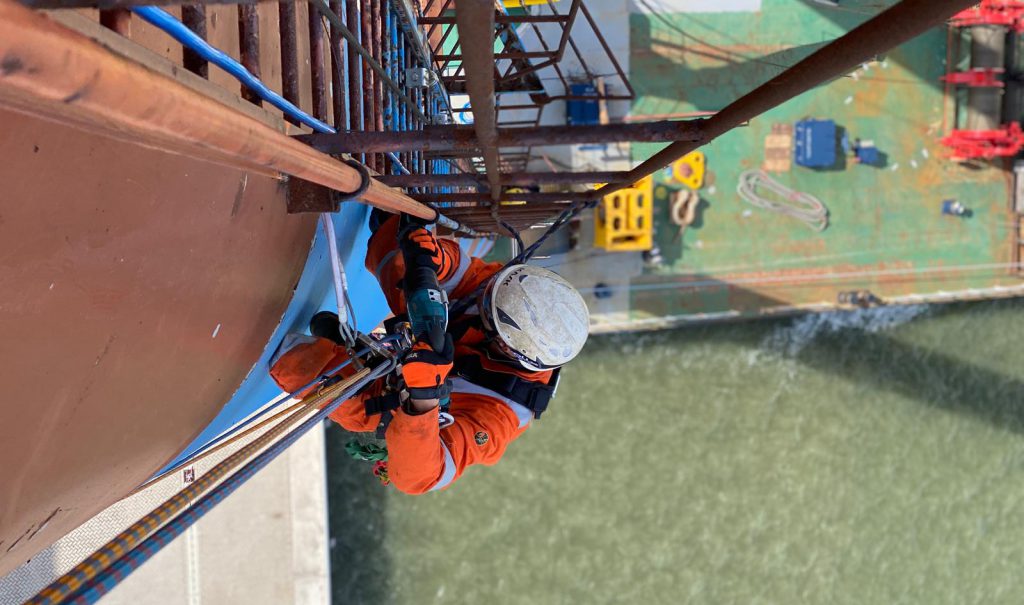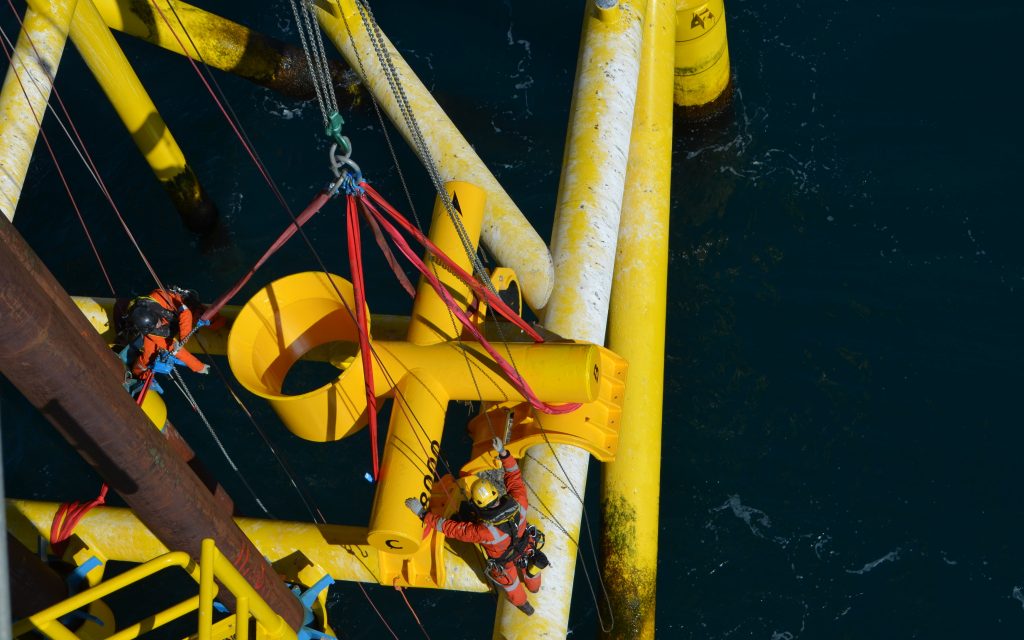
Stand-by rescue team
Back to overviewWhat
Tilting the top of a crane. The work of Bilfinger Height Specialists consisted of stand-by rescue team and the installation of lifting points.

January 2020
Huisman Equipment B.V.
Where
On the Solitaire of Allseas near the Great Belt Bridge by Denmark. The Solitaire has been operational since 1998 and is one of the largest pipe layers in the world.
Work activities
On the Solitaire is a large crane designed by Huisman Equipment B.V. To make sure the ship could sail under the Great Belt Bridge near Denmark, the top of this crane had to be tilted. The work consisted of two parts:
- Stand-by rescue team. The cables of the crane were removed by a professional team. Bilfinger Height Specialists was the stand-by rescue team in order to make this work as good and safe as possible. Our technicians prepared the rigging prior to the work in order to be able to carry out any rescue as quickly and safely as possible.
- Subsequently, our technicians installed lifting points in order to be able to tilt the top of the crane.
With a team of 3 IRATA level 3 supervisors we successfully completed the work in 19 days.
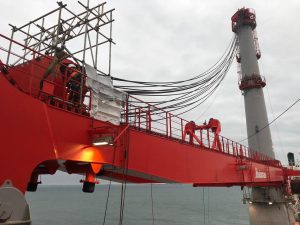
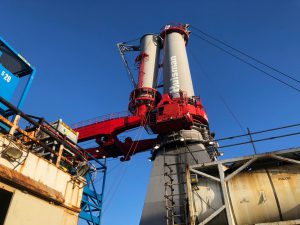

Why Rope Access?
It is practically impossible to lift someone down via stairs and ladders in a gurney in a fast and safe way. This takes too much time and in emergencies it is important to act quickly. By means of rope access it was possible to carry out a possible rescue and bring someone quickly and safely to the deck.
We also installed the lifting points to tilt the crane. By means of rope access we installed these in 1 day.
Executing these lifting points with an aerial work platform or with scaffolding would have taken more time and there would be more risks because of this long duration.
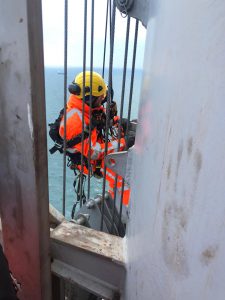

Similar projects
Always on top
Sign up for our updates.


